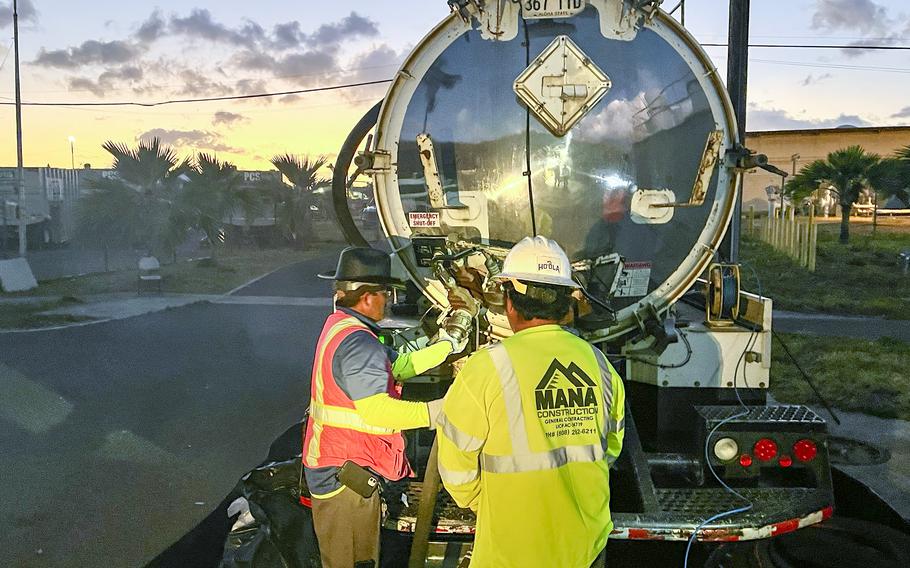
Workers with Joint Task Force-Red Hill disconnect a fuel line from a truck used for moving the final gallons of accessible residual fuel from the Red Hill Bulk Fuel Storage Facility in Hawaii on March 6, 2024. (Department of Defense)
FORT SHAFTER, Hawaii — The last gallons of residual fuel in the Red Hill underground storage facility in Honolulu were removed Wednesday, the Defense Department announced.
The massive tanks were emptied about six months ahead of the schedule from the original defueling plan, according to a DOD news release.
With 61,414 gallons of residual fuel removed in recent weeks, the effort to permanently close the Red Hill Bulk Fuel Storage Facility moves into a new phase with the Navy in charge.
Residual fuel is what remains in low points of pipelines after tanks have been emptied via gravity.
Defense Secretary Lloyd Austin in March 2022 ordered the World War II-era facility permanently closed after a jet fuel leak contaminated the Navy’s water distribution system in late 2021.
Thousands of people living in military housing communities on or near Joint Base Pearl Harbor-Hickam were forced to temporarily relocate as the Navy flushed the entire system. Hundreds of residents and former residents have filed suit in federal court seeking compensation for medical conditions and other hardships they say arise from the contamination.
The Defense Department established Joint Task Force-Red Hill to empty the 20 massive underground tanks. That task force will stand down in the coming weeks, with the next phases in shutting down Red Hill to be overseen by Navy Closure Task Force-Red Hill.
The new task force, headed by Rear Adm. Stephen Barnett, who commands Navy Region Hawaii, will remove about 4,000 gallons of fuel in the pipelines accessible only by destroying them. The task force will undertake the multiyear task of emptying about 28,000 gallons of sludge at the bottom of the tanks, cleaning them and removing contaminants that have leeched into the soil and aquifer.
As of Wednesday, 104,703,574 gallons of fuel had been removed since the operation began in October, according to the news release.
The U.S. Environmental Protection Agency and the Hawaii Department of Health are conducting inspections to determine that defueling has been done in accordance with orders issued by the two agencies, the release said.